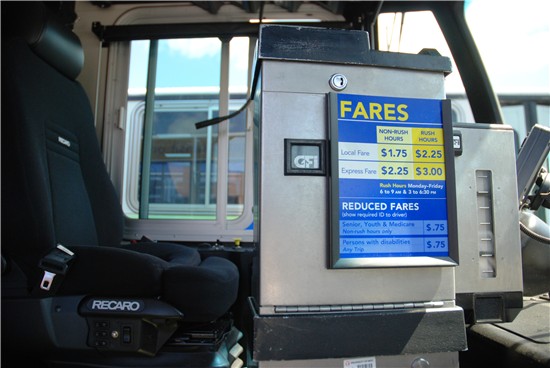 This week’s Good Question comes from Sarah Graves (@sarahteal), who asked: Why does it cost more to ride during rush hour?
This week’s Good Question comes from Sarah Graves (@sarahteal), who asked: Why does it cost more to ride during rush hour?
In the Twin Cities metro, transit fares are lower during off-peak hours to encourage transit use throughout the entire day and balance the demand for buses, drivers and related support. Currently, about half of Metro Transit ridership occurs during rush hours.
Since 2008, non-rush hour fares have been $1.75 on local bus routes, the METRO Blue Line and the METRO Red Line. This is 50 cents lower than $2.25 the rush hour fares in effect during the peak commuter travel periods of 6 a.m. to 9 a.m. and from 3 p.m. to 6:30 p.m. each weekday. Fares on those express bus trips that operate during rush hours are 75 cents lower during non-rush hours ($2.25 instead of $3).
Separate fares for rush hour and non-rush hour periods have been in place at Metro Transit since 1982 and are not uncommon among U.S. transit agencies. The Dallas Area Rapid Transit and King County Metro Transit, in Seattle, are among the agencies that offer reduced price fares during non-rush hour periods.
The Metropolitan Council is responsible for establishing the fare policy and rates for all regional transit service. The agency regularly reviews fare structure and policies based on factors such as demographic trends, technology and shifts in methods of fare payment. A number of new fare tools have been introduced in recent years such as the Student Pass, 7-Day Pass. Auto Refill and advance sales of the Northstar Family Pass are other examples of how technology has changed fare payment.
> Metro Transit fares
> The proof is in the payment
> Go-To Cards used to pay fares at record rate
Have a ‘Good Question’? Email it to goodquestion@metrotransit.org.